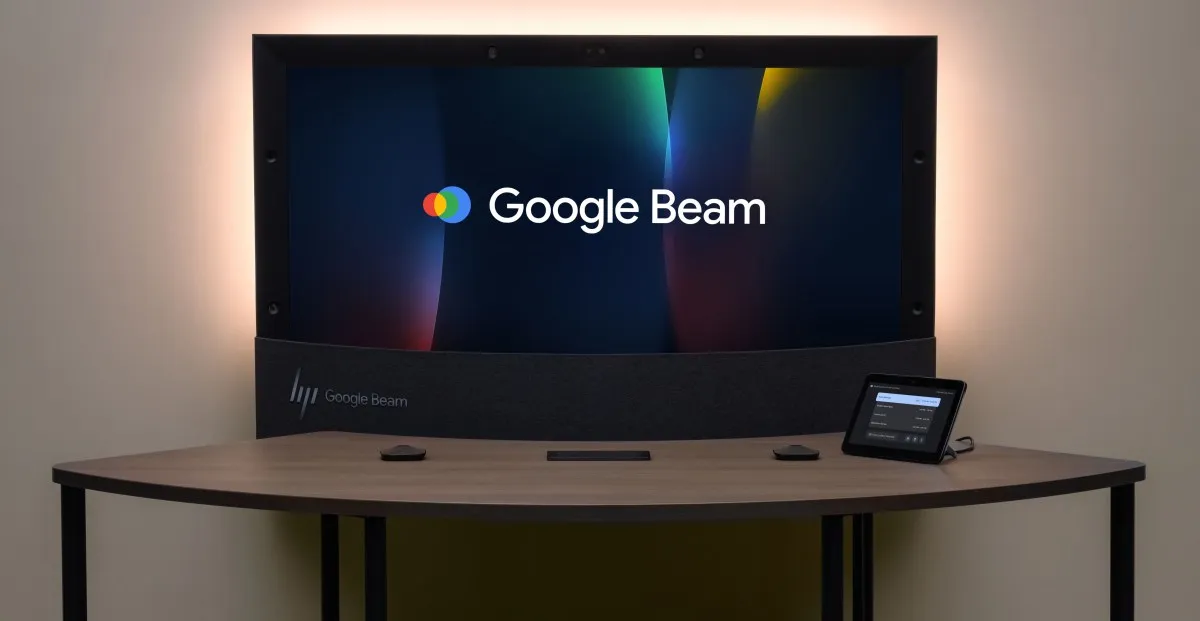
HP has made headlines by becoming the first company to preview innovative hardware built with Google Beam, the advanced 3D video communication technology that was formerly known as Project Starline. The new device, named the HP Dimension, boasts a remarkable 65-inch light field display, complemented by six high-speed cameras embedded within the bezel. This cutting-edge technology is designed to provide users with a “true-to-life” 3D video experience, making virtual communication feel more personal and immersive.
Google recently announced the rebranding of Project Starline to Google Beam, which allows third-party manufacturers to utilize its design framework. HP is the first to take advantage of this opportunity, launching the HP Dimension specifically for enterprise use. Priced at $24,999, this device does not include the necessary software for video calls; users must purchase a separate Google Beam license to access popular platforms like Zoom or Google Meet. As of now, HP and Google have not disclosed the cost of these licenses.
During a demonstration of Google Beam, my colleague Alex Heath highlighted the technology's significant advantage: users do not need to wear headsets, glasses, or any special equipment to experience the 3D video communication. Beau Wilder, HP’s head of future customer experiences, emphasized that no specialized room is required, though a white background is recommended for an optimal viewing experience. “We’re not trying to put a caricature in a small box across the table from you,” Wilder stated. “We want you to walk into the room and instantly make eye contact without even thinking about it.”
While the HP Dimension allows users to hold video calls with colleagues using other platforms and devices, it’s important to note that those participants will not be able to see the 3D projection of the HP Dimension user. The device is equipped with a series of built-in cameras and features adaptive lighting that adjusts to the environment, creating realistic shadows and natural skin tones for a more authentic interaction.
In addition to its impressive visual capabilities, the HP Dimension incorporates spatial audio technology, which Wilder described as creating a sound experience that “never separates the voice from the body.” The device is also equipped with HP’s new Poly Studio A2 table microphones and features four strategically placed speakers behind its curved, acoustically transparent mid-wall, ensuring clear audio delivery directly to the users' ears.
Andrew Nartker, general manager of Google Beam, articulated the ultimate goal of this technology during the product briefing: “The ultimate goal of Google Beam — and it’s manifested on the HP Dimension — is to feel like you’re there.” He added, “You feel just like you’re there at the table working together … It’s all meant to bring us together and ultimately feel like we’re completely physically present.”
The HP Dimension is set to launch later this year across several countries, including the US, Canada, UK, France, Germany, and Japan. Notably, prominent companies such as Salesforce, Deloitte, and NEC Corporation have already committed to integrating Google Beam into their workplaces, highlighting the technology's potential to revolutionize business communication.